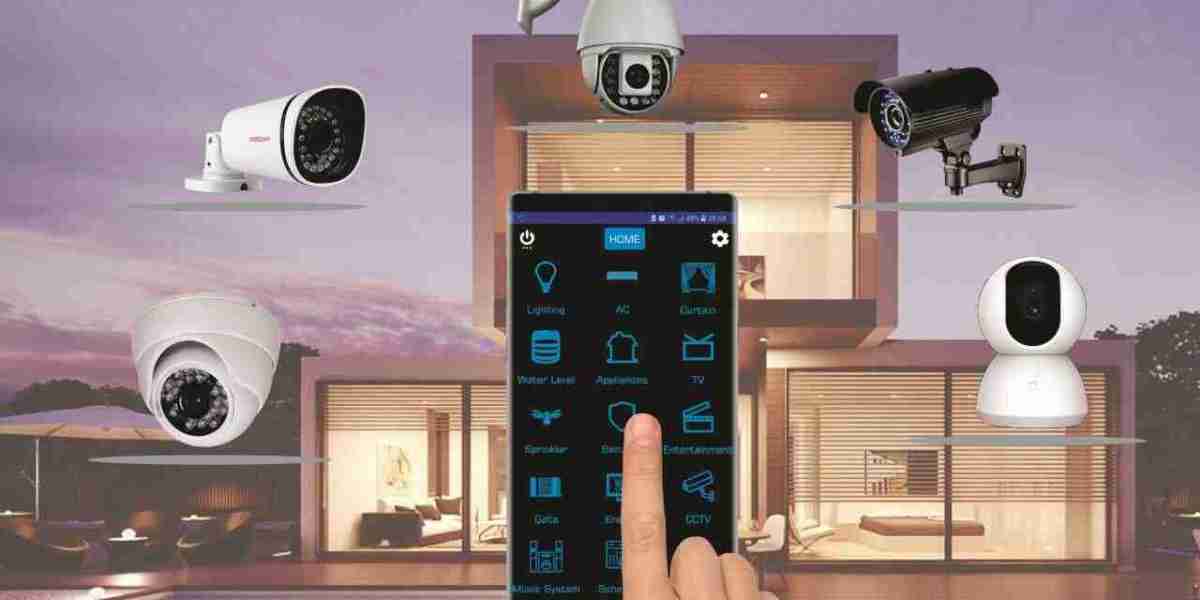The global shift toward smarter living has seen the rapid adoption of connected devices, reshaping various aspects of everyday life. Among these, smart home security systems have emerged as a crucial element in the evolving technology-driven world. A growing demand for improved safety features has caused the smart home security market to gain significant traction in recent years. But how viable is this market in the long term? Let’s dive into its potential, drivers, challenges, and future outlook.
The Growth Trajectory
The smart home security market is expanding rapidly. According to multiple reports, this market is expected to grow at a compound annual growth rate (CAGR) of around 20% from 2024 to 2030. The main drivers of this growth include increasing concerns over personal security, the rapid advancement in Internet of Things (IoT) devices, and greater accessibility of affordable high-tech products.
Security has always been a priority for homeowners, and with the increasing sophistication of cyber threats, traditional alarm systems are being swiftly replaced by smart home technologies. Security cameras, motion sensors, door locks, window sensors, and even smart doorbells are now common parts of a standard home security system.
The appeal lies in the ability to monitor one’s property remotely through smartphones or other smart devices, real-time alerts, video surveillance, and integration with other home automation systems. Consumers are now looking for more than just basic security; they seek interconnected ecosystems that offer convenience, peace of mind, and even energy savings.
Technological Advancements Fueling Growth
Technological innovations are at the core of this growth. Advances in machine learning, facial recognition, and real-time cloud monitoring have greatly enhanced the capabilities of smart home security devices. Machine learning algorithms enable security systems to differentiate between a potential threat and a benign event, reducing the number of false alerts homeowners receive.
Additionally, cloud-based storage has made it easier to access video footage anytime, from anywhere in the world. Wireless technology also plays a key role in ease of installation, making it simpler for users to set up their own systems without requiring professional assistance.
More recently, AI integration is gaining traction. Virtual assistants, such as Alexa and Google Assistant, now seamlessly interact with smart home security systems to perform commands like locking doors, arming alarms, or controlling lights to make the home appear occupied.
Market Drivers and Opportunities
The main drivers behind the surge in demand for smart home security systems are growing safety concerns, particularly in urban areas, and the proliferation of connected devices. As technology becomes more affordable, even middle-class households can incorporate IoT-powered security into their daily lives.
Smart homes have evolved from a novelty to a necessity in many parts of the world. With IoT-enabled devices, consumers are building their ideal homes that include not just smart lighting and temperature control, but integrated security systems for maximum convenience and security.
Additionally, the demand for more customizable security systems is also a factor. Consumers no longer need to install comprehensive, intrusive systems; instead, modular solutions allow homeowners to pick and choose components to suit their unique needs.
Challenges Faced by the Market
Despite the obvious growth potential, the smart home security market does face challenges. The foremost issue is cybersecurity. As security systems become more interconnected, they also become more vulnerable to cyberattacks, such as hacking or unauthorized access. Consumers and manufacturers must be proactive about data security, ensuring their devices feature up-to-date encryption and secure connectivity.
Another challenge is interoperability. The variety of smart home security products and brands often doesn’t align seamlessly with each other. This disjointed integration can lead to frustrations for consumers, making them wary of adopting certain products or systems altogether.
Regulatory and privacy concerns are also rising in tandem with the adoption of smart home security technology. The collection, storage, and processing of sensitive user data (including surveillance footage) can raise alarms about potential breaches of privacy.
Future Outlook
The future of the smart home security market looks promising, particularly as innovation continues to push new boundaries. As devices become smarter and more reliable, adoption rates are expected to climb, especially in North America, Europe, and Asia-Pacific regions. Moreover, increased awareness about the importance of cyber protection will likely drive improvements in security features and reassure consumers about potential vulnerabilities.
Furthermore, as consumer preferences shift towards convenience, affordability, and user-friendly solutions, manufacturers will be challenged to offer seamless, easy-to-install products without compromising on functionality or safety.
In conclusion, the smart home security market shows strong viability for the coming years, driven by emerging technologies, rising demand for convenience, and an evolving understanding of what modern security systems should entail.




